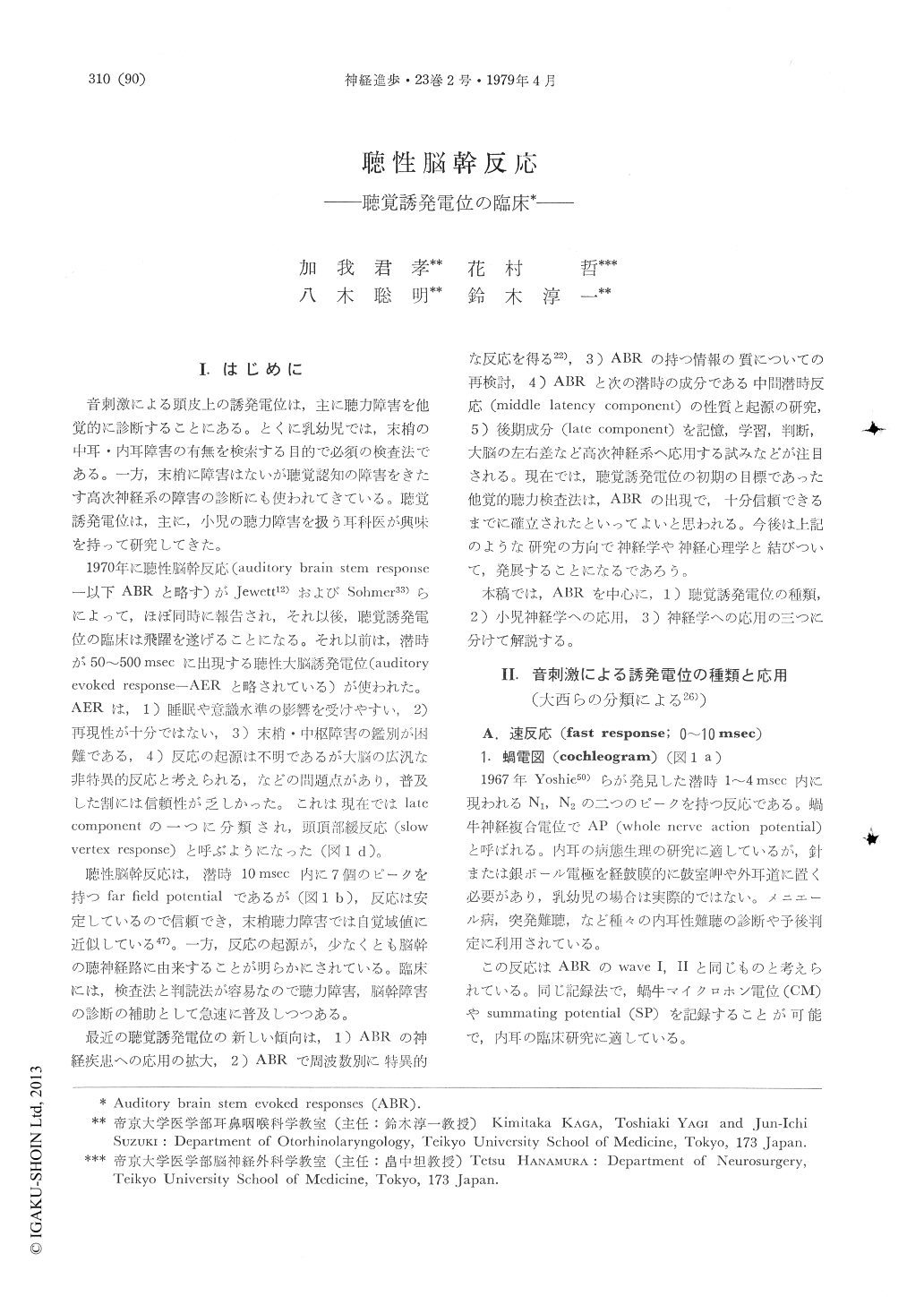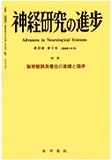Japanese
English
- 有料閲覧
- Abstract 文献概要
- 1ページ目 Look Inside
I.はじめに
音刺激による頭皮上の誘発電位は,主に聴力障害を他覚的に診断することにある。とくに乳幼児では,末梢の中耳・内耳障害の有無を検索する日的で必須の検査法である。一方,末梢に障害はないが聴覚認知の障害をきたす高次神経系の障害の診断にも使われてきている。聴覚誘発電位は,主に,小児の聴力障害を扱う耳科医が興味を持って研究してきた。
1970年に聴性脳幹反応(auditory brain stem response―以下ABRと略す)がJewett12)およびSohmer33)らによって,ほぼ同時に報告され,それ以後,聴覚誘発電位の臨床は飛躍を遂げることになる。それ以前は,潜時が50〜500msecに出現する聴性大脳誘発電位(auditoryevoked response-AERと略されている)が使われた。AERは,1)睡眠や意識水準の影響を受けやすい,2)再現性が十分ではない,3)末梢・中枢障害の鑑別が困難である,4)反応の起源は不明であるが大脳の広汎な非特異的反応と考えられる,などの問題点があり,普及した割には信頼性が乏しかった。これは現在ではlatecomponentの一つに分類され,頭頂部緩反応(slowvertex response)と呼ぶようになった(図1d)。
The auditory evoked potential studies performed on man during past 30~40 years have mainly examined the activity originated in the rostral parts of the auditory pathway (slow vertex response, SVR). Recently, however, a new response originated from the caudal portions of the auditory pathway, cochlear nerve and brain stem, could be recorded from man via scalp electrodes by using computer averaging techniques. That is the brain stem evoked response (ABR or BSR).
The auditory physiological study of the ABR developed very rapidly. Now the ABR plays an important role in routine clinical examinations.

Copyright © 1979, Igaku-Shoin Ltd. All rights reserved.


